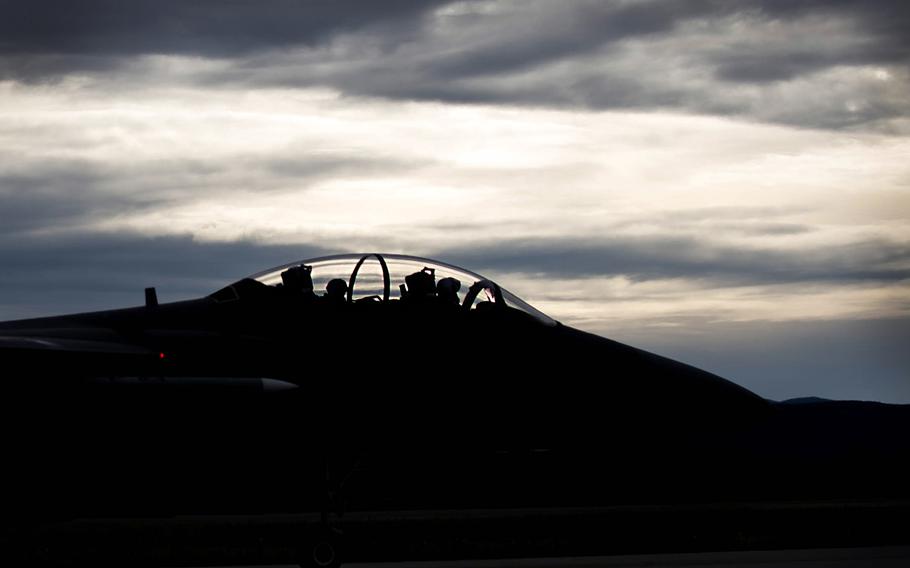
A U.S. Air Force F-15E Strike Eagle dual-role fighter aircraft assigned to the 336th Fighter Squadron, Seymour Johnson Air Force Base, N.C., prepares to take off Aug. 5, 2016, from Eielson Air Force Base, Alaska. (Shawn Nickel/U.S. Air Force)
WASHINGTON — The Air Force will face a shortage of 1,000 fighter pilots in the next few years, the Air Force’s top leadership said Wednesday. That is a significant jump from earlier announcements that it would be 700 fighter pilots short by the end of the year, and indicates that despite recent efforts to improve readiness, the fighter pilot shortage will continue to increase.
“It is a crisis,” said new Air Force chief of staff Gen. David Goldfein, who flew combat missions in the F-16 fighter jet and F-117 stealth fighter.
The pilot shortage is a result of lower pilot morale at a time when increased hiring by the commercial airline industry has made it more attractive to leave, Goldfein and Air Force Secretary Deborah Lee James told reporters at the Pentagon.
The lower morale is due to constant wartime deployments and reduced budgets, which has left non-deployed pilots without the funds or available aircraft to train with and stay current.
Goldfein testified before the Senate in June that the Air Force is also short 4,000 maintainers, which exacerbates the problem, because it cuts into the number of aircraft that are available to fly.
All of that is driving the Air Force’s losses, he said Wednesday.
“The reality is, pilots who don’t fly, maintainers who don’t maintain, controllers who don’t control are not going to stay with the company,” Goldfein said.
The Air Force is working to address the shortfalls by establishing two new F-16 training facilities later this year; the locations have not been announced.
The shortfall of pilots is also a reflection of a nonstop demand on air power since the Persian Gulf War 25 years ago, he said. Today’s pilots have about half the flight training opportunities that Goldfein had, he said, which is feeding the low morale.
“We’re able to maintain a higher state of readiness forward where the combatant commanders need it, but the bill payer is the home station,” Goldfein said.
The Air Force did not have immediately available statistics on how many flight hours its non-deployed pilots were getting each month.
“Morale and readiness are absolutely linked. Where we have high readiness we have reasonable high morale," Goldfein said.
“Where we have low readiness we have our largest morale issues.”
copp.tara@stripes.com Twitter: @TaraCopp